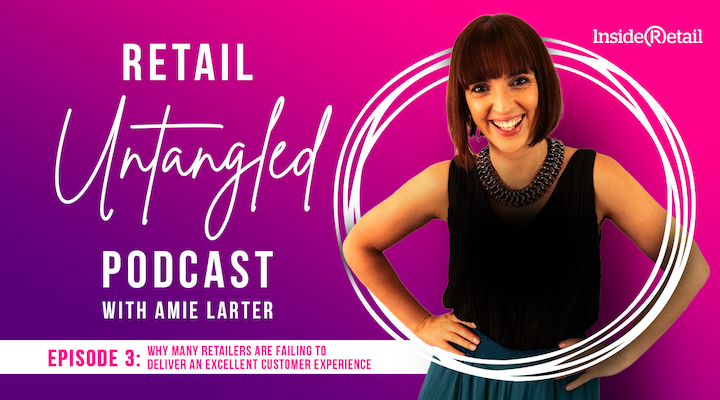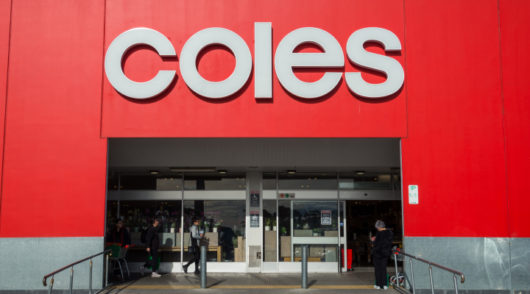Many brands are getting so caught up with trends like AI or the latest social media platform, they’re overlooking the importance of the customer experience, contends an expert in experiential retail.
Speaking to Amie Larter for Inside Retail’s podcast series Retail Untangled, Michael Tutek founder and CEO at retail experience platform Preezie, says every engagement a customer has with a brand contributes to its overall reputation and impression.
“Whether that be an ad, or a sign, or walking down the mall, from the first engagement all the way to the latest, most people want an experience that they enjoy when they interact with the brand.”
But many retailers are failing to deliver an ideal customer experience because they are ignoring the basics, he says – too easily distracted by flash new technology and the many buzzwords prevalent in retailing and marketing today.
“As a shopper, a consumer like everybody else, it’s all about getting back to the basics: Just make things easy and convenient.”
That means making your website navigation as easy as possible, and the checkout as simple as possible. It also means addressing the compatibility of channels: If a customer wants to look at something in a store, then buy it later online, and possibly have it delivered to somewhere else again, is that possible?
“A lot of it comes down to getting back to the basics and just understanding the customer journey all the way from the start to the end … just make it easy for me to find you, discover products and buy from you. And then when I do, make me feel special so that I remember you next time and you’re always top of mind.”
He quotes Amazon founder Jeff Bezos who describes Amazon not as a retail company but as a customer experience company.
“I feel like the point he was trying to prove is to just make the customer experience simple and efficient and don’t overly stress [about] using the fanciest tech or having a brand that is pixel perfect. It’s just like, “Cool, I go to your site, I search, it’s easy, I understand what I’m doing, I can save it for later, I can easily add to cart, if I have a problem after that I can get a refund.”
The online and in-store experiences are merging
Tutek believes the line between customer experiences in-store and online is already blurring and that at some point – whether five years from now or 10 – consumers won’t even distinguish between the two.
He cites as an example Canon Cameras, which Preezie built an in-store guided shopping experience for. Customers scan a QR code in the store and complete a short quiz to help them figure out the best models for them to consider. “That’s all about just trying to bridge that gap between online and offline.
“It’s going to end up being this one morphed experience. You won’t even say online or in-store – it will just be a generic term.”
He refers to multiple forms of “micro-moments” and how they will shape the connection between brands and customers in the future: each interaction will collectively build a brand experience, whether advertising, on social media, or – in the case of activewear label Lorna Jane as an example – having a friend who wears its products.
“There are probably 20 or 30 micro-moments over a span of time and you don’t know where they’re going to be. One will be with their friend who bought the leggings, and one will be with someone who had to return something and said it was the greatest returns experience they ever had. One will be online, one will be on an app, and one will be in-store.”
The ‘perfect’ omnichannel experience
So what advice would Tutek offer businesses attempting to build the perfect omnichannel experience for their customers?
“Let’s imagine there was no such thing as online and there was no such thing as in-store and someone came in and said, ‘We sell things on these screens and we sell them in stores, and we create an experience for the business and it can be anywhere.’ What would that look like? And how would I structure my team and my budget on that?
“So it’s about rethinking how we structure teams. There are definitely specialist skills required: you need to be a specialist in digital, you need to be a specialist in merchandising in-store, and those are 100 per cent required. But it’s about rethinking how we define the customer experience and almost pretending there is no such thing as in-store and online and then just going on from there,” he explains.
“I think we’re using the term omnichannel now because there are clearly defined lines between in-store and online. At some point we’re going to look back and go, ‘I can’t believe we used to actually call it omnichannel’.”
Listen to the full podcast and hear Michael Tutek talk about what loyalty really means and how to deliver it, how to make consumers comfortable sharing contact details, like email – and how to successfully deploy personalisation to wow customers.






